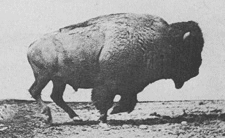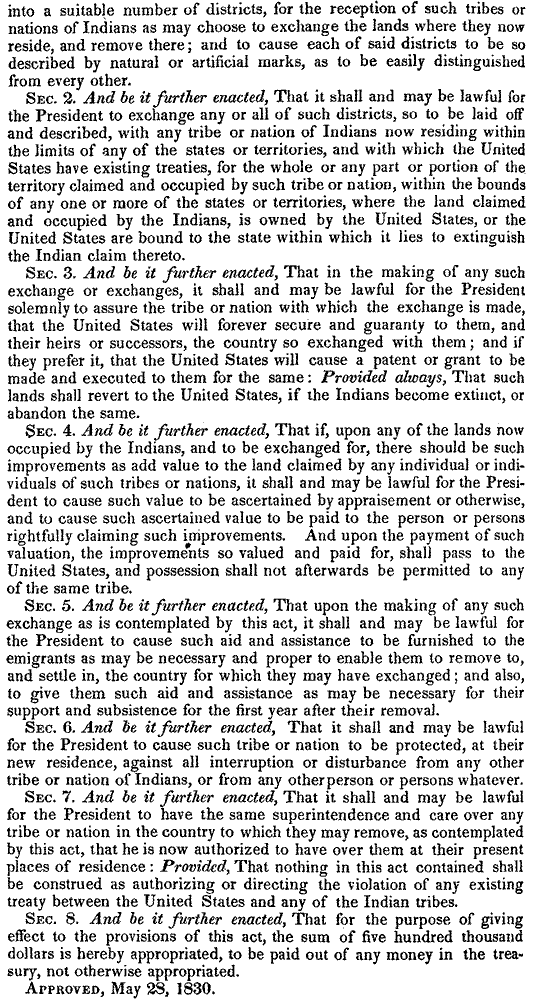|
Indian Removal Act of 1830 Transcript



Continued below...
Source: Library of Congress
Recommended
Reading: Trail of Tears: The
Rise and Fall of the Cherokee Nation. Description: One of the many ironies
of U.S. government policy toward Indians
in the early 1800s is that it persisted in removing to the West those who had most successfully adapted to European values.
As whites encroached on Cherokee land, many Native leaders responded by educating their children, learning English, and developing
plantations. Such a leader was Ridge, who had fought with Andrew Jackson against the British. Continued below...
As he and other
Cherokee leaders grappled with the issue of moving, the land-hungry Georgia legislators, with the aid of Jackson, succeeded
in ousting the Cherokee from their land, forcing them to make the arduous journey West on the infamous "Trail of Tears." ...A treasured addition for the individual remotely interested in American Indian history
as well as general American history.
Related Reading:
Recommended
Reading: Indian
Removal: The Emigration of the Five Civilized Tribes of Indians (423 pages) (University of
Oklahoma Press)
Recommended Reading: Indian
Removal (The Norton Casebooks in History). Description: This casebook traces the evolution of U.S. Indian
policy from its British Colonial origins to the implementation of removal after 1830. Continued below...
Placing
Indian removal in political and social contexts, the editors have selected contemporary primary-source documents that reveal
the motives and perspectives of both whites and Indians and cover the complicated influences of Jacksonian Democracy and the
early stirrings of what would later be referred to as Manifest Destiny. Letters, treaties, and journal entries give readers a sense of the ordeal of removal
for American Indians.
Recommended
Reading: Trail of Tears: The
Rise and Fall of the Cherokee Nation. Description: One of the many ironies
of U.S. government policy toward Indians
in the early 1800s is that it persisted in removing to the West those who had most successfully adapted to European values.
As whites encroached on Cherokee land, many Native leaders responded by educating their children, learning English, and developing
plantations. Such a leader was Ridge, who had fought with Andrew Jackson against the British. Continued below...
As he and other
Cherokee leaders grappled with the issue of moving, the land-hungry Georgia legislators, with the aid of Jackson, succeeded
in ousting the Cherokee from their land, forcing them to make the arduous journey West on the infamous "Trail of Tears." ...A
treasured addition for the individual remotely interested in American Indian history as well as general American
history.
Try the Search Engine for Related Studies: The Indian Removal
Act of 1830 Transcript, Copy of the Indian Removal Act, List of Indian Removal Acts, Purpose, Results, Causes of Indian Removal,
Details, Detailed History, Reasons for Indian Removal.
|

